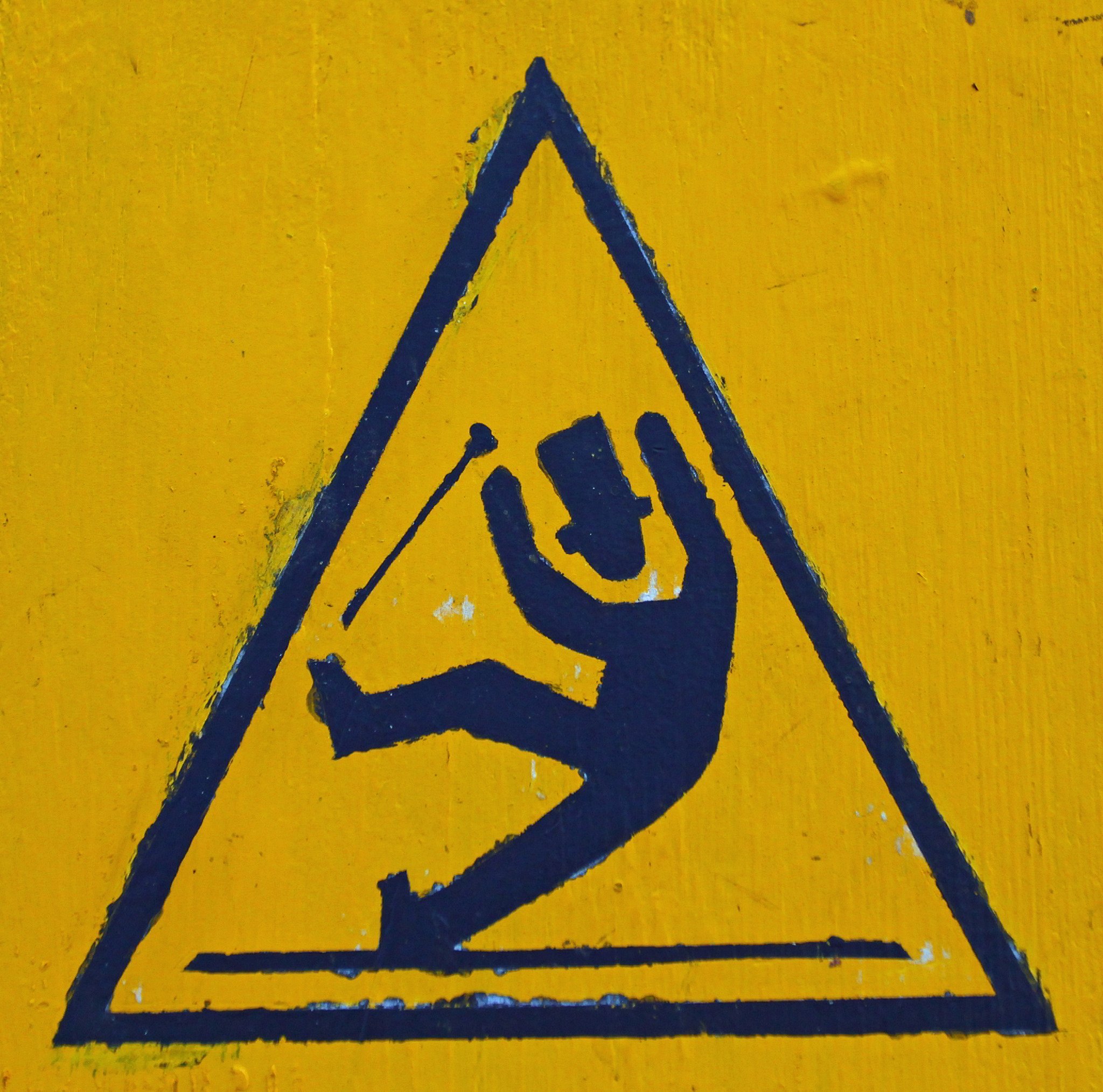Risk assessment is one of the core features of any health, safety or environmental management system.
Download Safeti's free Risk Assessment Template (Basic) to start developing your own risk assessments and stay legally compliant.
4. Accident Records Going back to our accident records, which is an easy way to look at existing problems and things that have caused injury or illness in your business. This should give you an insight into things that hopefully have been improved. But, it will also highlight areas of high risk, and there may be still opportunity for improvement. It's worth casting your eye across these areas and the related activities or tasks that have caused the issues. Just to see and make sure that you're happy with the outcomes of any investigations. It's a good way to follow up and make sure that whatever processes you have in place for improvement are actually working. 5. Absence Records Number five to identify hazards, leading on from accident records is to take a good look at your sickness absence records. To see if you can use any information within them to identify some risks that may not be so obvious that aren't being controlled adequately. For example, have there been any absences that your employees have attributed to ill health that's been caused as a result of the work environment or conditions. This may also relate to organizational factors such as inadequate supervision or training. They may be stressed because of workloads. There may be issues around interpersonal relationships with management and so on. There are a range of factors and red flags that you can identify from looking at this information. You can then reverse engineer the issue to the actual root of the problem. 6. After Hours Number six, our inclination is to speak to our front of line operators and people working in the normal shift patterns. But something to be aware of is that there's a lot of useful information to be found when speaking to contractors and maintenance staff. Particularly those working out of normal ours. There's a lot of unseen activity and sometimes it's not as well controlled as you would like it to be. Often it's high-risk activities that are being carried out when the factory is not producing or the construction site is at a lower level of operations. So that's something to be very aware of. Make sure that whoever is responsible for managing those staff is well co-ordinated and communicated with. Engaging with the people on the ground for some feedback can be highly valuable, you can identify risk that would otherwise be off your radar. 7. Manufacturer's Guidance Number 7 then, and one that any HSE professional will be very aware of. It's looking at the manufacturers guidance and instruction for use of any equipment machinery or chemicals and substances that you'll be using. When it goes back to the legal premise for a lot of health and safety or environmental risk and the responsibility of employers. Much of it boils back to making sure you're following manufacturer's instructions. It will make it much easier for you to identify hazards. If you can't interpret these make sure to get someone competent to interpret them for you. And as long as you are aligned to that guidance and doing everything that they're asking of you, then for the vast majority of circumstances, you will be in a good place. Ensure to take into account anything else is happening on your site. Make sure there's no conflict or impacts, knock-on effects from each of the activities that you're doing. 8. Existing Procedures Number 8 then to help you identify hazards is just looking at your operational procedures and method statements or work instructions. To give you an insight into how work is being managed and workers are being asked to undertake an activity. You know, this is of course a pretty obvious one. But sometimes we get a little bit too comfortable in the fact that a work construction or method statement actually exists. Then when we take a good look at it, we actually find out that the way the work is managed or planned is really insufficient. Or it presents a lot of issues in itself. So that's something to be aware of, to get proactive on and certainly get help from those that are most familiar with the activities or tasks. 9. Regulatory Guidance Number nine, second last bit of guidance here on our top 10 tips to identify hazards. And that is just looking at your local industry or regulator guidance at depending on where you are. There may be lots of useful information and here in the UK, we have the Health and Safety Executive. They have a really comprehensive website. Albeit, their guidance is all in written form and but you can take that information, interpret it and communicate it to your staff as and when necessary. It will bring you up to speed and let you know about the the legal stance on a lot of issues that may be relative to your particular sector or work. Along with the manufacturer's guidance, do use your local regulators website. The HSE is great as a check mechanism to ensure you're aligned with the legal expectations or the industry standards. If they don't have the information themselves, they're usually pretty good at pointing you in the right direction. 10. Servicing & Maintenance Lastly, tying all of this together is to do good review of your existing servicing and maintenance for your buildings and your equipment. To check that anything that you're doing currently is relevant and sufficient for managing hazards on your site. You may after doing your walk around and speaking to people, identify items and things and relate it back to your HSE or local regulatory guidance. You may find that when you tie it all together, there are quite a few gaps between the industry expectation and what you're actually doing currently. Aim to close that gap to make sure that you're falling into line with industry standards and legal obligations to reduce risk to your business. That's it for our 10 Ways to Identify Hazards! Hopefully when you put all these tactics to identify hazards together, it builds up a real picture for you. It should help you prioritize and develop an improvement plan to reduce risk in your business. That's it for this episode of Safeti School. We hope this was helpful. If so,please remember to rate, review and subscribe to this podcast on iTunes Google podcasts or Spotify. Remember for more health safety and environment help, you can visit us at safeti.com. Until next time, take care. Bonus Content | What if I see a Hazard Symbol? If you are dealing with substances which may be hazardous to health, it would be useful to get familiar with the globally standardised hazard symbols. Hazard pictograms alert us to the presence of a hazardous chemical or substance. The symbols help us to recognise that the chemicals we are using might cause harm to people or the environment. The CLP hazard pictograms are very similar to those used in the old labelling system and appear in the shape of a diamond with a distinctive red border and white background. One or more pictograms might appear on the labelling of a single chemical. Flammable WHAT DOES IT INDICATE? Extremely flammable gas, Flammable gas, Extremely flammable aerosol, Flammable aerosol, Highly flammable liquid and vapour, Flammable liquid and vapour, Flammable solid EXAMPLES: Lamp oil, petrol, nail polish remover Irritant WHAT DOES IT INDICATE? May cause OR does cause various conditions, such as, respiratory irritation, drowsiness or dizziness, allergic skin reaction, serious eye or skin irritation Harmful if swallowed, in contact with skin etc. EXAMPLES: Washing detergents, toilet cleaner, coolant fluid Toxic WHAT DOES IT INDICATE? The substance can be toxic/fatal if swallowed, in contact with skin or if inhaled EXAMPLES: Pesticide, biocide, methanol Environmental Hazard WHAT DOES IT MEAN? Very toxic to aquatic life with long lasting effects Toxic to aquatic life with long lasting effects EXAMPLES: Pesticides, biocides, petrol, turpentine Corrosive WHAT DOES IT MEAN? May be corrosive to metals Causes severe skin burns and eye damage EXAMPLES: Drain cleaners, acetic acid, hydrochloric acid, ammoniac Oxidising WHAT DOES IT MEAN? May cause or intensify fire; oxidiser. May cause fire or explosion; strong oxidiser. EXAMPLES: Bleach, oxygen for medical purposes Serious Health Hazard WHAT DOES IT INDICATE? May be fatal if swallowed and enters airways, causes damage to organs, may damage fertility or the unborn child, may/suspected of cause cancer or genetic defects EXAMPLES: Turpentine, petrol, lamp oil Explosive WHAT DOES IT INDICATE? Substance may be any of following: an unstable explosive, mass explosion hazard, severe projection hazard, fire, blast or projection hazard, may mass explode in fire. EXAMPLES: Fireworks, ammunition Gas Under Pressure WHAT DOES IT INDICATE? Contains gas under pressure; may explode if heated. Contains refrigerated gas; may cause cryogenic burns or injury. EXAMPLES: Gas containers, cylinders, air conditioning unit How to Identify Hazards | Ask for Help Name * Email * Phone Message * Submit
.elementor-6505 .elementor-element.elementor-element-5bf12f4{--divider-border-style:solid;--divider-color:#183AE4;--divider-border-width:2px;}.elementor-6505 .elementor-element.elementor-element-5bf12f4 .elementor-divider-separator{width:100%;}.elementor-6505 .elementor-element.elementor-element-5bf12f4 .elementor-divider{padding-top:15px;padding-bottom:15px;}.elementor-6505 .elementor-element.elementor-element-74b853e{text-align:center;}.elementor-6505 .elementor-element.elementor-element-52bbf44{--divider-border-style:solid;--divider-color:#183AE4;--divider-border-width:2px;}.elementor-6505 .elementor-element.elementor-element-52bbf44 .elementor-divider-separator{width:100%;}.elementor-6505 .elementor-element.elementor-element-52bbf44 .elementor-divider{padding-top:15px;padding-bottom:15px;}.elementor-6505 .elementor-element.elementor-element-70757f1{--divider-border-style:solid;--divider-color:#183AE4;--divider-border-width:2px;}.elementor-6505 .elementor-element.elementor-element-70757f1 .elementor-divider-separator{width:100%;}.elementor-6505 .elementor-element.elementor-element-70757f1 .elementor-divider{padding-top:15px;padding-bottom:15px;}.elementor-6505 .elementor-element.elementor-element-82671eb{text-align:center;}.elementor-6505 .elementor-element.elementor-element-09fd70e{text-align:center;}.elementor-6505 .elementor-element.elementor-element-b67e889 .gallery-item .gallery-caption{text-align:center;}.elementor-6505 .elementor-element.elementor-element-ae5b311{--divider-border-style:solid;--divider-color:#0C19E6;--divider-border-width:2px;}.elementor-6505 .elementor-element.elementor-element-ae5b311...

In Episode, we reflect on a point made by one of Safeti Podcast guests around moving from looking for the absence of negatives towards...

Simple Steps to prevent Slips Trips and Falls The main non-fatal injury (31%) to employees as reported in 2017/18 was a Slip, Trip or...